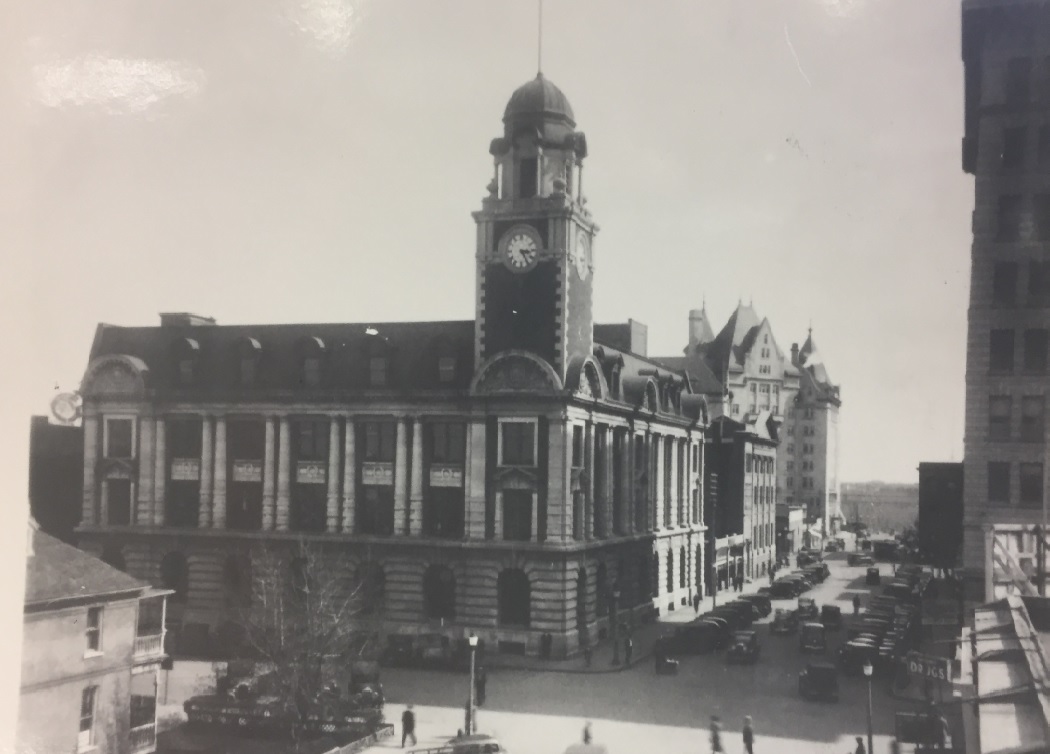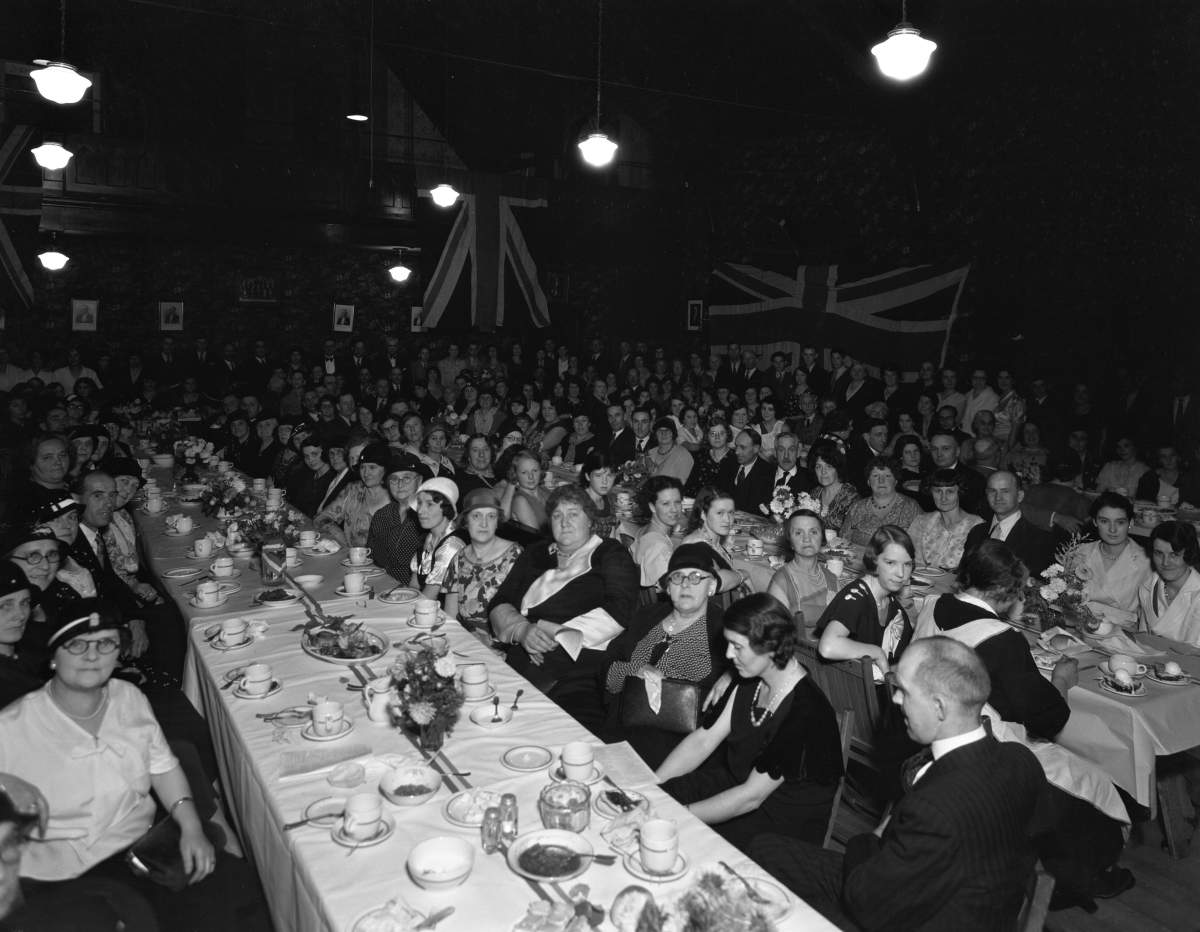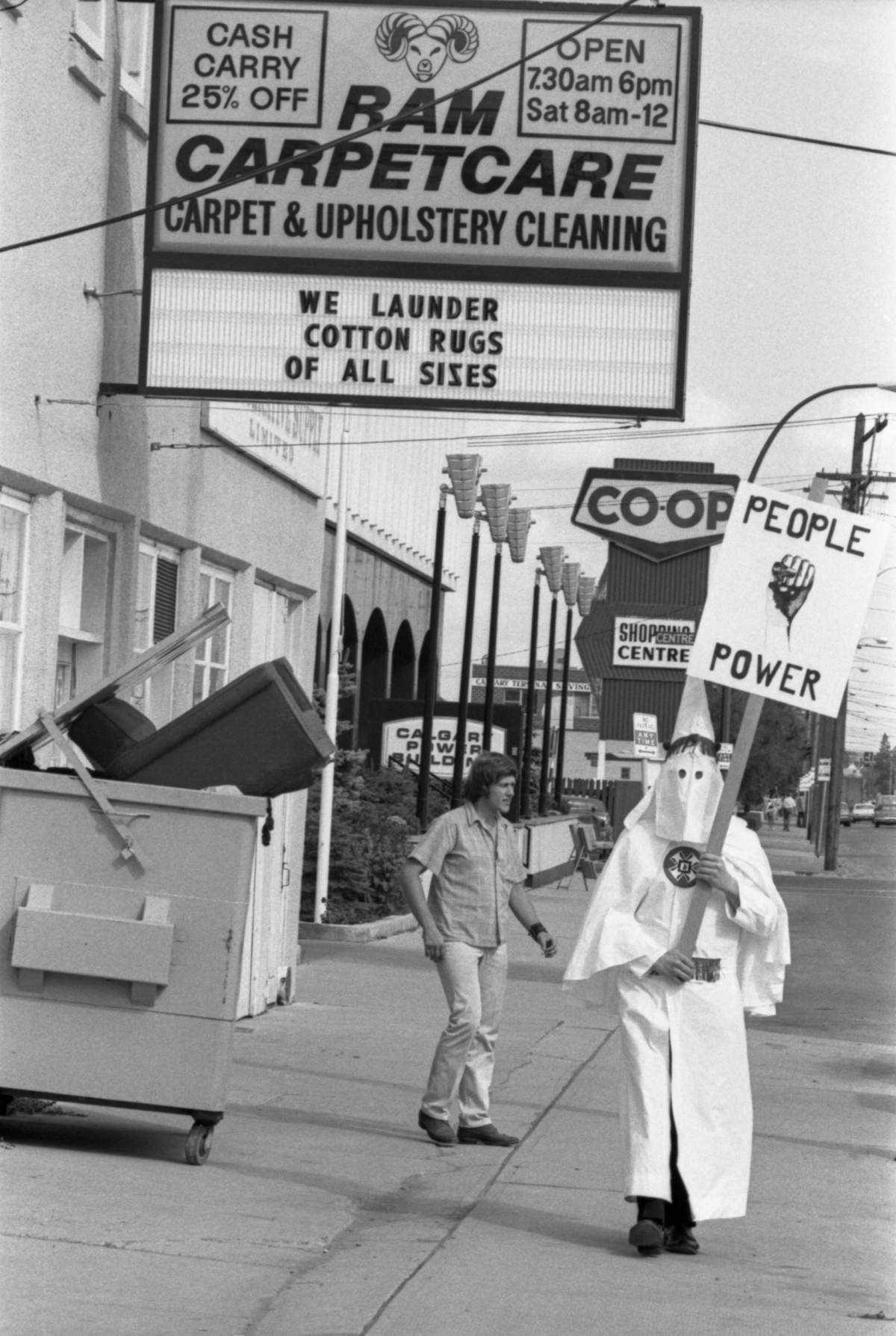A site with a controversial past in downtown Edmonton, has become the focus of a proposal for a commemorative plaque.

The corner of Jasper Avenue and 100 Street has transformed over the years. The Fairmont Hotel MacDonald has been the iconic constant for over a century.
Where the World Trade Centre sits today, there used to be a classical revival-style building. It was the third home for the Imperial Bank of Canada in Edmonton.
It was three storeys high and had four palatial columns where the Jasper Avenue main entrance was. On the 100 Street side, there was another entrance.
And somewhere on this site was an office for a newspaper called The Liberator.
“The Liberator was the Ku Klux Klan’s newspaper that they published from Edmonton in the 1930s,” explained Chris Chang-Yen Phillips, historian laureate, City of Edmonton.
Chang-Yen Phillips believes it was published from 1931 to 1933. At the time, the Klan was under the leadership of Ontario-born John James Maloney (also known as J.J.).
Maloney travelled across western Canada, emboldening the white supremacist movement with speeches to crowds often numbering in the hundreds. One venue Maloney used to speak at was known as Memorial Hall. According to Chang-Yen Phillips, today it would be situated close to the ATB branch on Jasper Avenue.
“These were people who were openly writing to the mayor – and the mayor was writing back saying ‘yours truly.'”

Get breaking National news
In a letter dated July 16, 1932, KKK Imperial Kligrapp and Kleagle Harold Wright wrote to then-mayor Daniel K. Knott:
“The Ku Klux Klan will hold a convention in the City of Edmonton, August 6 – 8 inclusive, and as part of proceedings will hold a demonstration on August 8, at which…an open air initiation will be held, during the course of which a fiery cross will be burned.”
Wright goes on to ask Knott whether the group can use the Exhibition grounds, calling it a “desirable place” to hold their event.
In a letter dated July 26, 1932 the mayor granted permission to the group to use the Grandstand and Racetrack on Aug. 8. The permit is granted “on the understanding that no smoking will be allowed on the Grandstand also that Fire Marshals will be allowed to be present.”
Chang-Yen Phillips was first approached by a local researcher last fall. She had been looking into Edmonton’s historical ties to white supremacy.
She is set to make a presentation to the Edmonton Historical Board on Jan. 25 on the merits of erecting a commemorative plaque where the old Liberator office used to be.
Chang-Yen Phillips has been instrumental throughout the research process, even documenting it on his podcast.
“I want people to look at Edmonton’s history and make some conclusions about how they want the city to be shaped based on that.”
Typically, the volunteer Edmonton Historical Board reviews built heritage. Since the building in question was demolished in 1950, this proposal is especially unique.
“In this case, I think what’s more interesting and more important is the story and so that’s what we’d be looking to capture with a plaque,” said Barbara Hilden, vice-chair, Edmonton Historical Board.
The decision, however, doesn’t rest with the board. They take into consideration points raised during the presentation and make recommendations to city council.
City council would ultimately decide.
Whether such an unpleasant chapter in the city’s history warrants this kind of recognition is now the central question.
- Alberta minister, new permanent chief medical officer of health eye renewed collaboration
- ‘Bite me’: Alberta baker challenges Premier Smith’s office over boycott tied to recall
- Calgary massage therapist charged with sexual assault
- ASIRT, Calgary police release more details on man shot by officer in Dalhousie














Comments